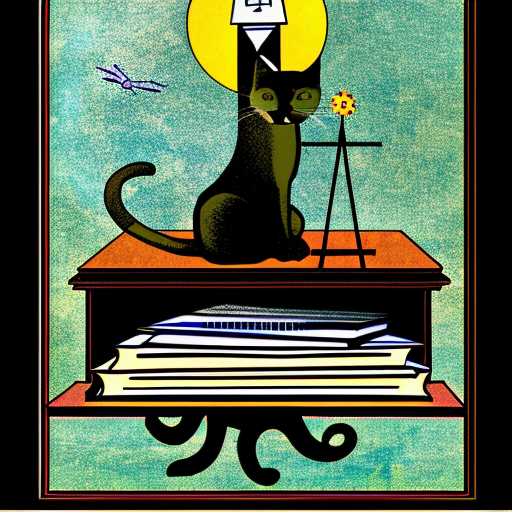One-line summary:
In Kurt Vonnegut’s Cat’s Cradle, a writer becomes entangled in a web of absurdity and dark humor as he explores the dangerous implications of science, religion, and human nature.
The Absurdity of Science and Technology
Cat’s Cradle satirizes the pursuit of scientific progress and the unintended consequences that arise from it. The protagonist, John, sets out to write a book about the atomic bomb, but his research leads him to the discovery of a substance called ice-nine. This fictional compound has the power to freeze all water on Earth, effectively ending life as we know it. Vonnegut uses ice-nine as a metaphor for the dangers of scientific advancement without ethical considerations. The novel questions the responsibility of scientists and the potential for their creations to be used for destructive purposes.
The Role of Religion and Belief Systems
Religion is another central theme in Cat’s Cradle. Vonnegut introduces the fictional religion of Bokononism, which is based on lies and foma (harmless untruths). Bokononism provides comfort and purpose to its followers, even though its teachings are acknowledged as false. Through Bokononism, Vonnegut explores the power of belief systems and their ability to shape individuals and societies. He suggests that religion, like science, can be both a force for good and a source of manipulation and control.
The Absurdity of Human Nature
Vonnegut presents a bleak and satirical view of human nature in Cat’s Cradle. The characters in the novel are often driven by selfish desires, greed, and a lack of empathy. The absurdity of their actions highlights the flaws and contradictions inherent in human behavior. Vonnegut suggests that humanity’s destructive tendencies are not limited to a select few but are ingrained in the fabric of society. He challenges the notion of progress and questions whether humanity is capable of learning from its mistakes.
Cat’s Cradle explores complex themes through dark humor and satire. It serves as a cautionary tale about the dangers of unchecked scientific progress, the power of belief systems, and the inherent flaws of human nature. Vonnegut’s writing style is characterized by his wit, irony, and ability to weave together seemingly unrelated storylines.
Key Takeaways:
- Scientific progress without ethical considerations can lead to unintended consequences.
- Religion and belief systems have the power to shape individuals and societies, for better or worse.
- Human nature is flawed and often driven by selfish desires.
- Vonnegut’s dark humor and satire shed light on the absurdity of the world.
“Tiger got to hunt, bird got to fly; Man got to sit and wonder, ‘Why, why, why?’ Tiger got to sleep, bird got to land; Man got to tell himself he understand.” – Kurt Vonnegut, Cat’s Cradle
Cat’s Cradle offers a thought-provoking exploration of the consequences of science, the power of belief systems, and the flaws of human nature. Through its dark humor and satirical lens, the novel challenges readers to reflect on the absurdity of the world we live in. Vonnegut’s ability to blend complex themes with wit and irony makes Cat’s Cradle a timeless and engaging read.












